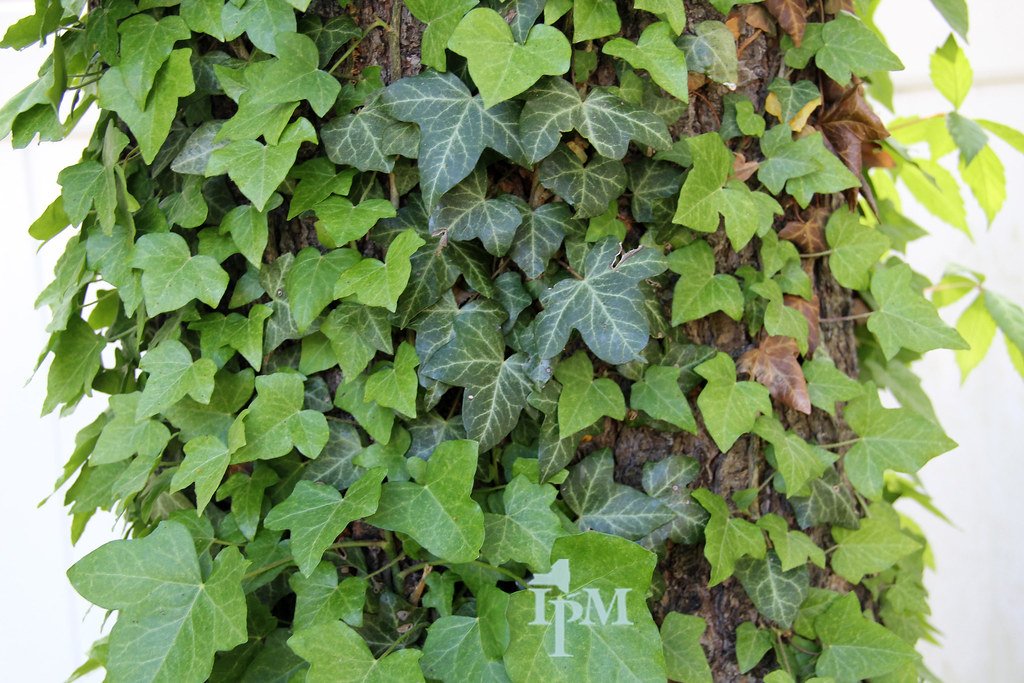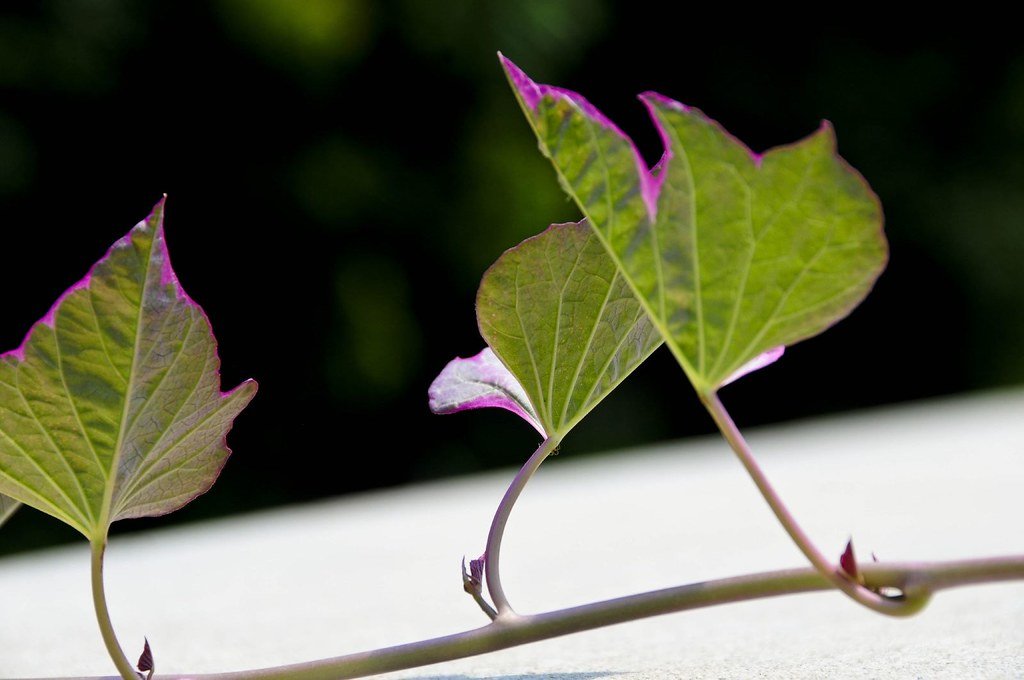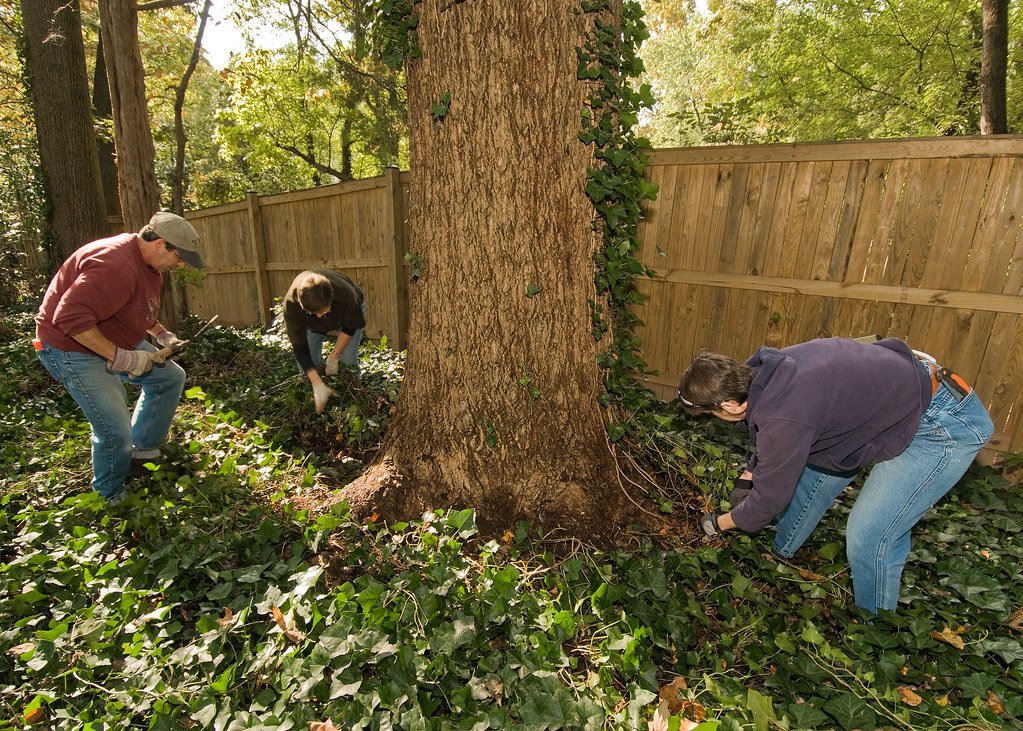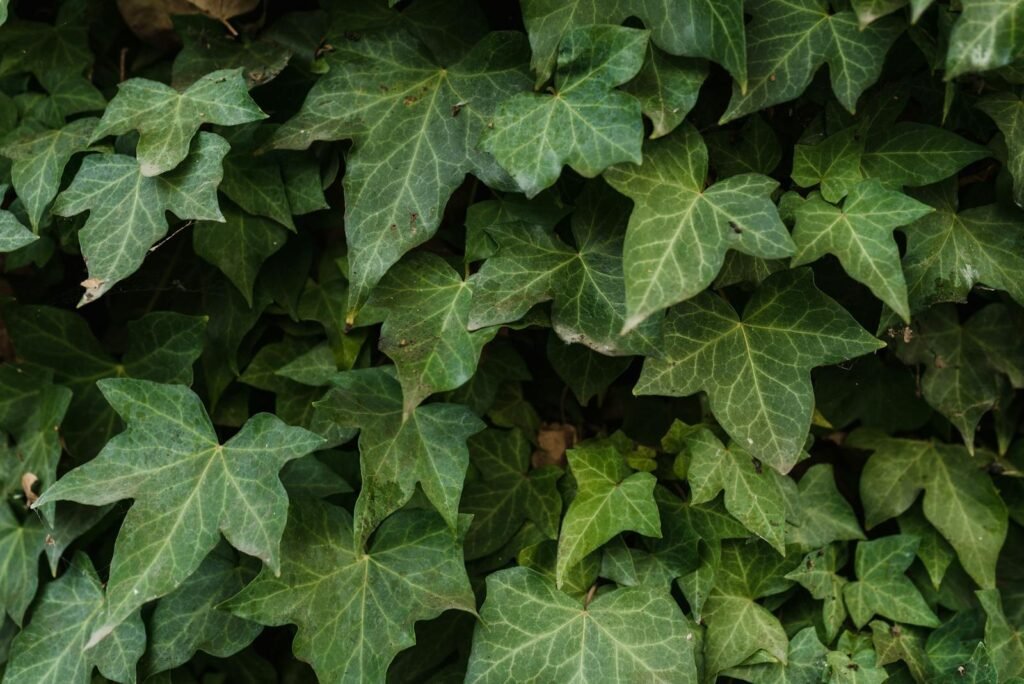Picture this: you’re hiking through what should be a pristine Pacific Northwest forest, expecting to see towering Douglas firs and delicate ferns carpeting the forest floor. Instead, you’re greeted by an endless green blanket that’s strangling everything in sight. This isn’t the enchanting fairy-tale forest you imagined—it’s a botanical nightmare unfolding right before your eyes. English ivy, that seemingly innocent climbing plant adorning countless homes and gardens, has turned into one of the most destructive invasive species the Pacific Northwest has ever seen.
The Green Monster That Came to Stay

English ivy arrived in the Pacific Northwest during the 1800s, brought by European settlers who missed the familiar landscapes of their homeland. Back then, nobody could have predicted that this charming vine would become a forest-devouring monster. The plant seemed harmless enough—just a decorative groundcover that added a touch of Old World elegance to colonial gardens. What settlers didn’t realize was that they were unleashing a species perfectly adapted to the region’s mild, wet climate. Without its natural predators and diseases from Europe, English ivy found itself in an ecological paradise where it could grow unchecked. Today, this “romantic” plant covers over 300,000 acres in Oregon and Washington alone, turning diverse forest ecosystems into ivy monocultures.
How English Ivy Became Nature’s Bully

Think of English ivy as the ultimate schoolyard bully, but instead of stealing lunch money, it’s stealing sunlight, nutrients, and life itself from native plants. The vine’s aggressive growth strategy involves multiple tactics that would make any military strategist proud. First, it carpets the forest floor, creating a dense mat that prevents native seedlings from germinating. Then, it climbs trees with remarkable speed, using tiny rootlets that burrow into bark, eventually reaching the canopy where it blocks precious sunlight from reaching lower vegetation. The weight of mature ivy can become so enormous that it brings down entire trees during storms, creating a domino effect of destruction. This isn’t just competition—it’s botanical warfare.
The Science Behind Ivy’s Unstoppable Spread

English ivy’s success story reads like a masterclass in biological adaptation and invasion ecology. The plant exhibits what scientists call “phenotypic plasticity,” meaning it can dramatically change its growth patterns depending on environmental conditions. In low-light forest floors, ivy grows horizontally, creating dense mats. When it encounters vertical surfaces, it switches to climbing mode, producing specialized adhesive rootlets. Research shows that ivy can grow up to 15 feet per year in ideal conditions, with some individual plants living for over 100 years. The vine also reproduces both sexually through berries and asexually through fragmentation, meaning even small pieces can establish new colonies. This dual reproductive strategy makes eradication efforts incredibly challenging.
Native Plants Fighting a Losing Battle

Imagine trying to compete in a race where your opponent has a jetpack while you’re running in cement shoes—that’s essentially what native Pacific Northwest plants face when competing with English ivy. Species like trillium, Oregon grape, and native ferns have evolved over thousands of years to thrive in the region’s specific light and soil conditions. English ivy disrupts these finely tuned relationships by creating an entirely different microenvironment. The thick ivy mat changes soil chemistry, retains moisture differently, and blocks the natural cycle of leaf litter decomposition that many native plants depend on. Researchers have documented dramatic declines in native plant diversity in ivy-invaded areas, with some forest plots showing 80% fewer native species compared to ivy-free zones.
Wildlife Casualties of the Ivy Invasion

The story of English ivy’s impact on Pacific Northwest wildlife reads like an ecological disaster movie. Birds that depend on native berries and insects find themselves in food deserts where ivy has taken over. While ivy does produce berries, they’re toxic to many native bird species and provide poor nutrition compared to native alternatives. Small mammals lose crucial habitat as ivy eliminates the diverse understory vegetation they need for shelter and nesting. Even insects struggle, as ivy supports far fewer species than the native plants it replaces. A single native oak tree can support over 500 species of moths and butterflies, while English ivy supports fewer than 20. This creates a cascade effect up the food chain, ultimately impacting larger predators and the entire ecosystem’s stability.
The Economic Cost of Pretty Leaves

English ivy’s beauty comes with a staggering price tag that taxpayers and landowners are forced to pay. In Oregon alone, the state spends over $2 million annually on ivy removal efforts, and that’s just the tip of the iceberg. Private landowners, parks departments, and conservation organizations collectively spend tens of millions more trying to control this invasive species. The economic impact extends beyond direct removal costs—ivy-damaged trees pose safety hazards, requiring expensive removal or pruning. Property values can decline in areas where ivy has taken over, as the dense growth can damage foundations, walls, and other structures. Insurance claims related to ivy damage have increased dramatically, with some policies now excluding ivy-related damage entirely.
Climate Change’s Unlikely Ally

If English ivy were a supervillain, climate change would be its perfect sidekick, amplifying its destructive powers in ways scientists are only beginning to understand. Rising temperatures and changing precipitation patterns in the Pacific Northwest are creating even more favorable conditions for ivy growth. The plant thrives in the warmer, wetter winters that climate change is bringing to the region. Meanwhile, native plants adapted to historical climate patterns struggle to keep pace with rapidly changing conditions. Research suggests that ivy-invaded areas may actually contribute to local warming, as the dense canopy cover reduces soil moisture and eliminates the cooling effect of diverse native vegetation. This creates a feedback loop where ivy makes conditions even more suitable for its own expansion while making life harder for native competitors.
The Myth of Ivy as Erosion Control

One of the most persistent myths about English ivy is that it provides excellent erosion control, but this romantic notion crumbles under scientific scrutiny. While ivy does create surface coverage, its shallow root system actually increases erosion risk in many situations. Unlike native plants with deep, diverse root systems that create stable soil structure, ivy’s roots primarily function as anchors for climbing rather than soil stabilization. During heavy rains, ivy-covered slopes can experience catastrophic failure as the shallow roots can’t hold the soil together. Native alternatives like kinnikinnick, Oregon grape, and native grasses provide superior erosion control while supporting local ecosystems. The erosion control myth has unfortunately led many well-meaning property owners to plant ivy in sensitive areas, inadvertently creating future problems.
Biological Warfare: Ivy’s Chemical Weapons

English ivy doesn’t just compete physically—it wages chemical warfare against its competitors through a process called allelopathy. The plant produces compounds that inhibit the growth of other species, essentially poisoning the soil around it to prevent competition. These chemicals can persist in the soil even after ivy removal, creating what scientists call “legacy effects” that continue to suppress native plant recovery. Some of ivy’s chemical compounds also make the soil less hospitable to beneficial fungi and bacteria that native plants depend on for nutrient uptake. This biochemical sabotage helps explain why ivy-invaded areas often remain barren even after mechanical removal, requiring intensive restoration efforts to reestablish native plant communities.
The Removal Challenge: Why Ivy Fights Back

Removing English ivy is like trying to untangle a massive, living puzzle that fights back with every piece you remove. The plant’s extensive root system can extend several feet deep and dozens of feet horizontally, with tiny fragments capable of regenerating entire colonies. Hand-pulling ivy can take years for a single property, and incomplete removal often results in faster regrowth than the original infestation. Herbicide treatment faces its own challenges, as ivy’s waxy leaf surface repels many chemicals, and the dense growth makes it difficult to avoid affecting desirable plants. Even when removal appears successful, ivy seeds can remain viable in the soil for years, and birds continue to deposit new seeds from nearby infestations. Professional removal services often require multiple treatments over several years to achieve lasting results.
Success Stories: Communities Fighting Back

Despite the challenges, inspiring success stories are emerging from communities across the Pacific Northwest who refuse to surrender to ivy’s advance. The “No Ivy League” in Portland has organized thousands of volunteers who’ve removed ivy from hundreds of acres of public land. Their systematic approach combines community education, organized removal events, and long-term monitoring to prevent re-infestation. Forest Park in Portland has seen remarkable recovery in areas where dedicated volunteers have removed ivy over multiple seasons, with native plants returning naturally once the ivy is gone. These grassroots efforts prove that with persistence, community involvement, and proper techniques, it’s possible to reclaim forests from ivy’s grip.
Technology Meets Ivy: New Weapons in the Fight

Modern technology is providing new tools in the battle against English ivy, offering hope for more efficient and effective control methods. Drone surveys can now map ivy infestations across large areas, helping land managers prioritize removal efforts and track progress over time. GPS mapping allows removal crews to systematically work through infested areas and return to monitor treatment success. Specialized herbicide formulations designed specifically for ivy are showing improved results with less environmental impact. Some researchers are even exploring biological control options, studying ivy’s natural enemies in Europe to identify potential control agents that could be safely introduced to North America. While these technologies show promise, they’re still in development and require careful testing to avoid unintended consequences.
The Restoration Challenge: Bringing Forests Back to Life

Removing ivy is only half the battle—restoring native forest ecosystems requires patience, expertise, and often decades of dedicated effort. After ivy removal, soils may be degraded, compacted, or chemically altered, requiring amendment before native plants can successfully establish. Restoration specialists must carefully select native species that can tolerate the modified conditions while gradually improving soil health and ecosystem function. Seed collection and propagation programs help ensure genetic diversity among restored plant populations. The process is expensive and time-consuming, with restoration projects typically requiring 5-10 years of active management before becoming self-sustaining. However, successful restoration sites demonstrate that Pacific Northwest forests can recover their full biodiversity and ecological function when given proper care.
Prevention: The Most Powerful Tool

The old saying “an ounce of prevention is worth a pound of cure” couldn’t be more true when it comes to English ivy invasion. Preventing new infestations is far more cost-effective and environmentally sound than attempting removal after ivy becomes established. Early detection programs train community members to identify and report new ivy patches before they become unmanageable. Education campaigns help gardeners understand why ivy poses such a threat and provide information about attractive native alternatives. Some jurisdictions have banned the sale of English ivy, recognizing that continued propagation perpetuates the problem. Property owners can play a crucial role by removing ivy from their own land and choosing native plants for landscaping projects.
The Domino Effect: How Ivy Invasion Spreads

English ivy’s spread follows predictable patterns that researchers have dubbed “invasion corridors,” typically starting in residential areas and moving along waterways, roads, and forest edges. Understanding these patterns helps explain why some areas are more vulnerable than others and guides strategic intervention efforts. Ivy often escapes from gardens during winter when birds eat the berries and deposit seeds in natural areas. Stream corridors provide perfect highways for ivy expansion, as the moist conditions and disturbed soils create ideal establishment sites. Once established in these corridors, ivy can spread rapidly into adjacent forest areas. Urban-wildland interfaces represent the most critical battlegrounds, where prompt action can prevent ivy from reaching pristine forest ecosystems.
Native Alternatives: Beauty Without the Beast

Gardeners don’t have to sacrifice beauty to fight ivy—the Pacific Northwest offers numerous native alternatives that provide similar aesthetic appeal without the ecological destruction. Kinnikinnick creates stunning groundcover with glossy evergreen leaves and bright red berries that birds actually need. Wild ginger provides lush foliage and unique flowers in shaded areas. Oregon grape offers year-round interest with holly-like leaves, fragrant yellow flowers, and blue berries. Salal creates dense coverage perfect for erosion control while supporting dozens of native species. These native alternatives not only look beautiful but also provide essential habitat and food sources for local wildlife, creating gardens that contribute to ecosystem health rather than destroying it.
The Legal Battlefield: Ivy and Property Rights

English ivy has created complex legal situations that pit property rights against environmental protection, leading to disputes that sometimes end up in court. Some municipalities have passed ordinances requiring property owners to remove ivy, while others rely on voluntary compliance. Neighbor disputes arise when ivy spreads from one property to another, raising questions about liability and responsibility. Insurance companies increasingly exclude ivy-related damage from coverage, leaving property owners to bear the full cost of removal and structural repairs. The legal landscape continues to evolve as communities grapple with balancing individual property rights with collective environmental responsibility. These legal challenges highlight the need for proactive policies that address ivy as a regional problem requiring coordinated solutions.
Scientific Research: Understanding Ivy’s Secrets

Researchers across the Pacific Northwest are working to understand exactly how English ivy achieves its remarkable success, hoping to find weaknesses that could be exploited for better control methods. Studies are revealing how ivy modifies soil chemistry, affects water cycles, and interacts with native species at the cellular level. Genetic research is identifying the specific traits that make ivy so invasive, potentially leading to targeted control strategies. Long-term monitoring studies are documenting the full ecological impacts of ivy invasion and the effectiveness of different removal techniques. Some research focuses on ivy’s interaction with climate change, helping predict how invasion patterns might shift in the future. This scientific foundation is crucial for developing evidence-based management strategies that can effectively combat ivy invasion.
The Future Forest: What’s at Stake

The battle against English ivy isn’t just about preserving pretty forests—it’s about maintaining the ecological foundation that supports all life in the Pacific Northwest. If current invasion trends continue, scientists predict that ivy could dominate millions of additional acres within the next few decades. This would fundamentally alter the region’s character, eliminating the diverse understory communities that make Pacific Northwest forests unique. The loss would cascade through the entire ecosystem, affecting everything from soil health to water quality to wildlife populations. Future generations might inherit forests that are little more than ivy monocultures beneath towering trees, devoid of the rich biodiversity that currently defines the region. The choices made today about ivy control will determine whether the Pacific Northwest’s forests remain vibrant ecosystems or become green deserts.
Your Role in the Fight

Every person who cares about Pacific Northwest forests has a role to play in stopping English ivy’s advance, and the actions you take matter more than you might think. Start by removing ivy from your own property, even if it seems like a small contribution to a massive problem. Learn to identify ivy and report new infestations to local authorities or conservation groups. Volunteer with organized removal efforts in your community—these events are often fun, social activities that make a real difference. Choose native plants for your landscaping projects and encourage others to do the same. Support policies that restrict ivy sales and require removal in sensitive areas. Share information about ivy’s impacts with friends and neighbors who might not realize the scope of the problem.
When you see English ivy blanketing a forest floor, remember that you’re witnessing one of the most successful biological invasions in North American history. This isn’t romance—it’s ecological disaster in slow motion. The thick green carpet that might look lush and inviting is actually a biological wasteland that’s strangling the life out of one of the world’s most spectacular forest ecosystems. But here’s the thing about invasive species: they’re only unstoppable if we let them be. Communities across the Pacific Northwest are proving that with knowledge, determination, and collective action, we can push back against ivy’s advance and restore the forests that define our region. The question isn’t whether we can win this fight—it’s whether we’re willing to pick up the tools and join the battle. What will you choose to do about the ivy invasion in your own backyard?



